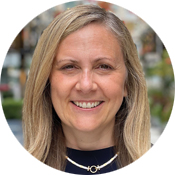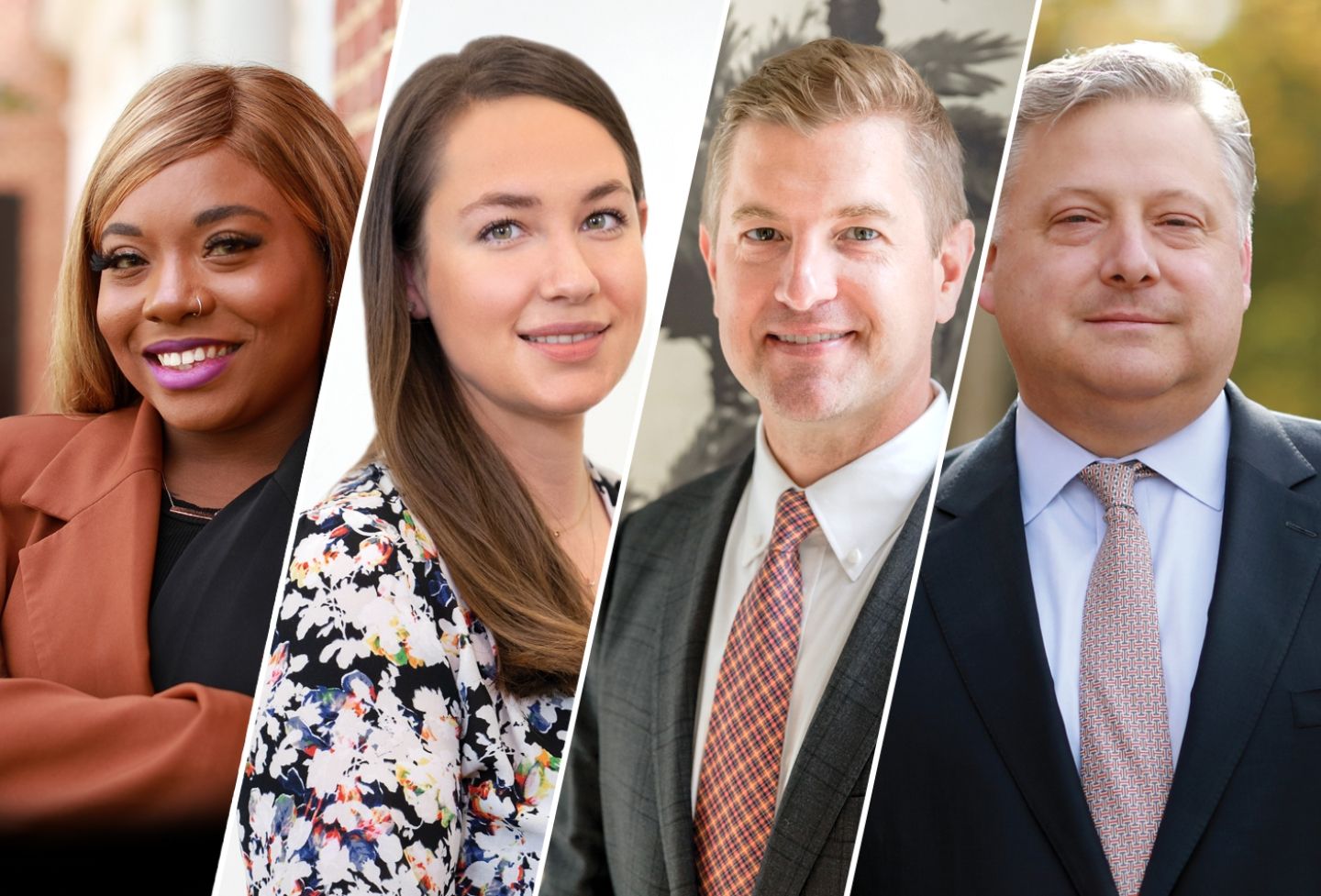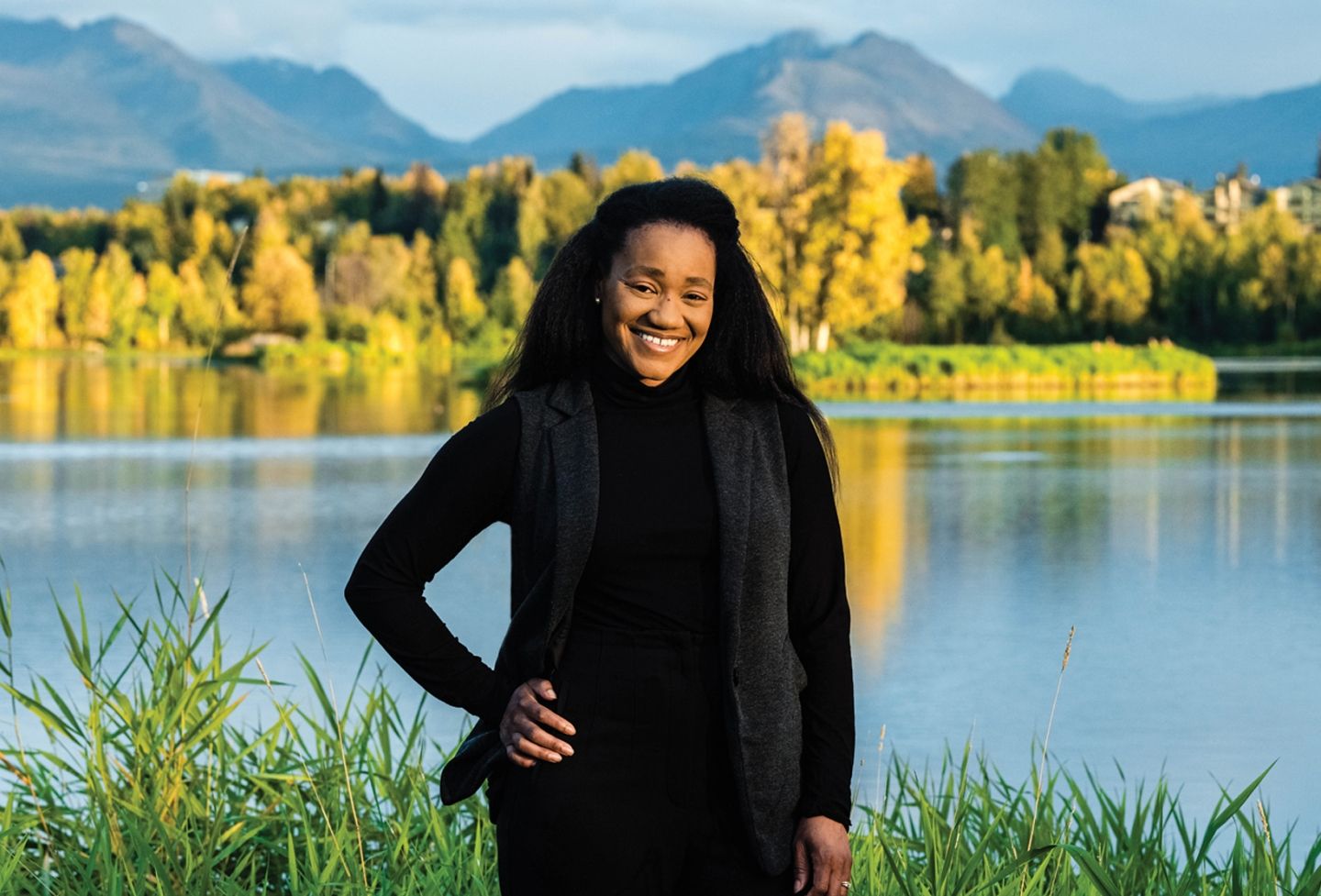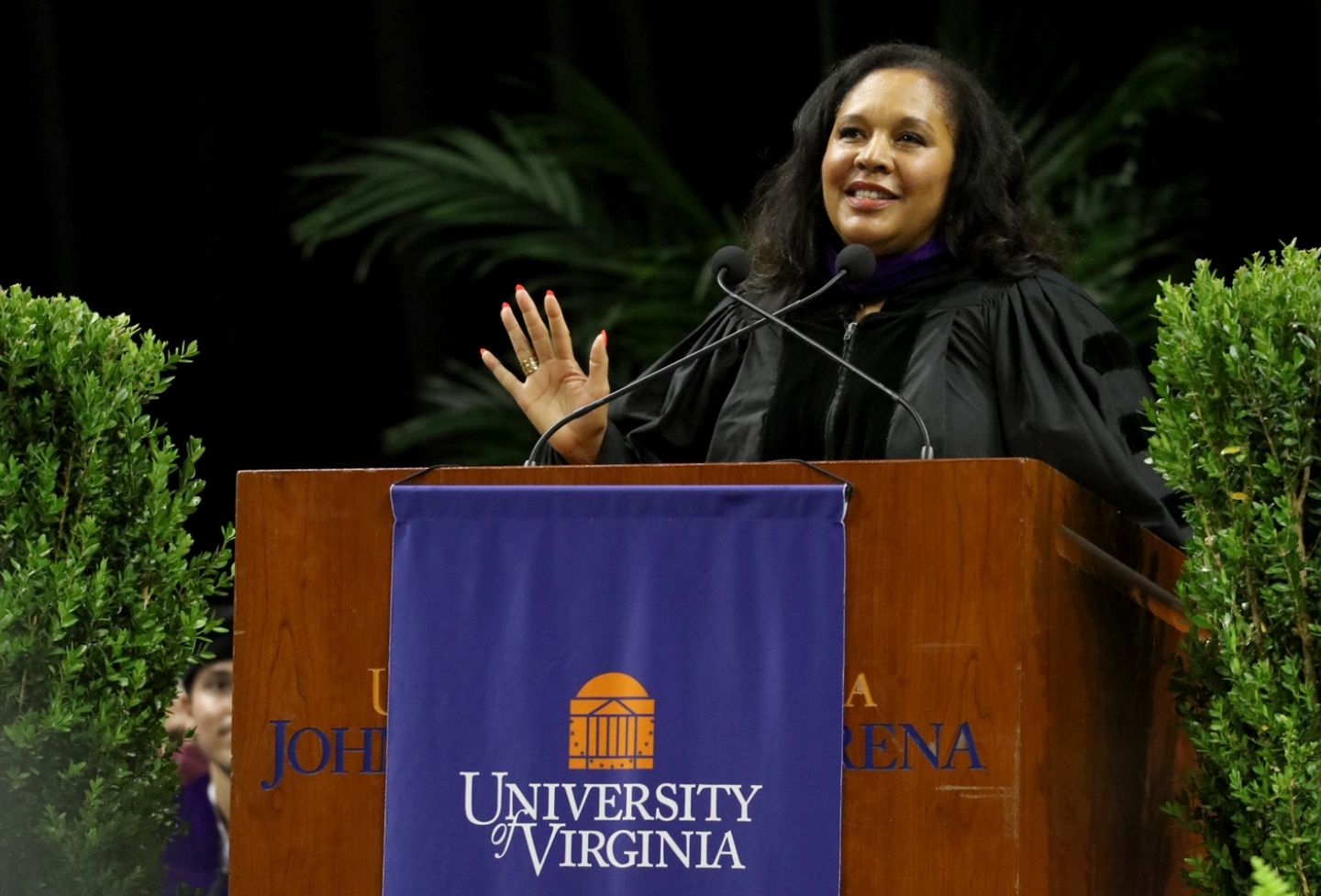When Rebecca “Becky” Brown ’03 and Melissa Meana (now Hartmann) ’03 met at the University of Virginia Law School of Law as first-year students, they felt an immediate connection, both with UVA and with each other.
They were from the Midwest and the same age. Both had come straight to law school after graduating from Big Ten universities. Both were assigned to the same section.
And both were drawn to UVA because it felt different from the other law schools they had visited.
“I applied to over 20 law schools,” Hartmann said. “When I started doing visits, I noticed that there was only one school where the students loved being there and didn’t want to graduate.”
Brown had a similar reaction. “I remember stepping off the van from the airport. I looked at the girl next to me and said, ‘I can go to school here?’ The students were so friendly. They weren’t wishing they had gotten in somewhere else.”
Both went on to public service careers, Hartmann in the Cook County state’s attorney’s office in Chicago for 13 years and Brown with the U.S. Department of Homeland Security in Washington, D.C., where she still works.
A decade and a half later, they had something else in common: Brown and Hartmann were each diagnosed with triple-positive invasive ductal carcinoma.
Though they had kept in touch sporadically since graduating, Brown credits their law school bond with helping her through diagnosis, treatment and recovery from her trying experience.

<p>Becky Brown and Melissa Meana Hartmann pictured during their UVA Law School days.</p>
Invasive ductal carcinoma is the most common breast cancer, accounting for eight out of every 10 diagnoses. It starts in the milk ducts and spreads to surrounding tissues and lymph nodes but, when detected and treated early, has a high survival rate.
About 10% of breast cancers are thought to be triple-positive. Normal breast cells contain estrogen, progesterone and human epidural growth factor receptors. Triple-positive breast cancer means that a tumor is feeding off receptors of all three.
Approximately 4% of the estimated 268,600 U.S. women diagnosed with invasive breast cancer in 2019 were under age 40, according to the American Cancer Society. Hartmann was diagnosed at 39 in 2018. “I had searing breast pain that occurred two or three times. I subsequently found a lump in the same breast,” she said. “A mammogram confirmed my worst fears.”

She had moved with her husband and two young children from Chicago to Dallas a year and a half earlier. Hartmann’s treatment at the University of Texas-Southwestern Medical Center included six rounds of chemotherapy and a year of immunotherapy, a double mastectomy, radiation and reconstruction.
Hartmann was very open about her diagnosis and treatment. She shared regular updates on Facebook and Instagram. “Being diagnosed at 39 was alarming,” she said. “I wanted to share my experience in order to encourage other people to be proactive in their self-care.”
Though she had moved on from her position in the state’s attorney’s office in Chicago, the woman who replaced her — who was the same age and had been diagnosed a year earlier — provided valuable information, insight and support.
“She was my mentor through my rollercoaster ride of breast cancer diagnosis and treatment,” Hartmann said.
<p>Cancer patients, she said, are good at sharing tips and tricks they’ve figured out on their own to make the journey a little easier. “One of the hardest parts of going through breast cancer diagnosis and treatment is articulating how you are really feeling — physically and emotionally. Having a trusted mentor you can lean on is priceless.”</p>
<p><strong>Brown was diagnosed</strong> a year later at Medstar Georgetown University Hospital. “I was already in the care of a medical oncologist because I had developed a few benign cysts over the years, so they wanted to keep a close eye on me. I had been getting mammograms since I was 34,” she said.</p>
<p>She had a clean checkup before her 40th birthday, but six months later, “cancer had already left the original tumor site and made it to my local, axillary lymph nodes.”</p>
<p>While Hartmann had been open on social media about her journey, Brown was reticent. “When I got diagnosed, I didn’t want to talk about it with anybody,” she said. “I didn’t know anyone my age who had had breast cancer.”</p>
<div class="captionbox-left-175">
<img alt="Melissa Meana Hartmann ’03" height="175" src="/system/files/uvalawyer/2022-fall/triple-meana-circle.jpg" width="175">
<div class="caption rtecenter">
Melissa Meana Hartmann ’03</div>
</div>
<p>Recalling Hartmann’s Facebook posts about her cancer journey, Brown reached out to her. “That first four to six weeks after you are diagnosed is so hard, not knowing what your treatment is, having second and third tests and CT scans,” Brown said.</p>
<p>“Melissa was so open with me, and so good at detailing what she went through and what to expect. She told me about the different chemotherapy medicines, surgery, reconstruction and radiation, and what I could expect. She sent me a very comprehensive breast cancer book when I was diagnosed, and later a body pillow to use after surgery,” Brown said.</p>
<p>Like Hartmann, Brown underwent chemotherapy and immunotherapy, a double mastectomy and reconstruction, and radiation.</p>
<p><strong>The UVA Law experience</strong> helped the women in another way, too. “The legal research and writing skills acquired while at UVA were instrumental in understanding our diagnosis, treatment options, and ultimately feeling well-informed about our paths to survival,” Hartmann said. </p>
<p>Brown elaborated, “One of our professors told us that you know you’ve arrived on the answer when your research starts looking the same. That’s how I felt about my cancer work-up and treatment plan. I had a ton of irons in the fire, and then it all circled up and my strategy solidified.”</p>
<p>As they learned in law school, second opinions are important. “There’s always another point of view — and everyone thinks they’re right,” Brown said.</p>
<p>Obtaining second opinions at every stage was critical to Brown’s care. “I was able to take the best ideas from each physician and improve my own treatment plan.”</p>
<p>Hartmann’s openness and generosity also harken back to her first-year experience at UVA Law. Because of a back injury, she missed a month of classes right after spring break of her first year. She feared she would have to drop out.</p>
<p>“I had three herniated discs in my back and had to fly home to Chicago to see doctors and receive treatment,” Hartmann said. “When I returned to finish the semester, fellow Section I classmates shared all their notes with me. I missed the end-of-the-year moot court competition so the professors created one just for me. I was able to finish my first year and had back surgery that summer.”</p>
<p>“All of the support I received at UVA was so generous — it was amazing,” Hartmann said.</p>
<p><strong>Today, both have excellent prognoses</strong> and entrepreneurial aspirations. Brown is renovating a house in Northwest D.C. near the National Zoo and running a side gig. Her company, Federalisms, creates “inside humor” greeting cards and gifts designed especially for federal employees and contractors.</p>
<p>Hartmann works with her husband, Bradley, at their Dallas-area business, Hartmann & Co. Their consulting and training firm helps the construction industry overcome language and cultural barriers and provides sales and leadership training to the lumber and building materials industry.</p>
<p>Hartmann and Brown stress it’s incredibly important for women — and men too — to perform breast self-exams regularly. Most younger women who are diagnosed with breast cancer found the lumps themselves.</p>
<p>“On the anniversary of my diagnosis every year, I ask everyone I know to set up their checkups,” Hartmann said.</p>
<p>Brown advises even the healthiest of young adults to make sure they have a preventive care system and regular exams. “You think you’re young and healthy and you don’t need it,” she said. “But having in place a care team that knows you is so critical — to find problems before they get worse and to help you navigate those problems immediately should they arise.”</p>
<p>Hartmann and Brown also continue to support each other and pay it forward to help other breast cancer patients on their journeys.</p>
<p>“Cancer is horrifying, but the people I’ve met and become closer to through the entire process have really been a silver lining on the worst cloud,” Brown said. “I would not have selected this path, but if I have to be on it, I see myself following Melissa and blazing the path for others.”</p>



